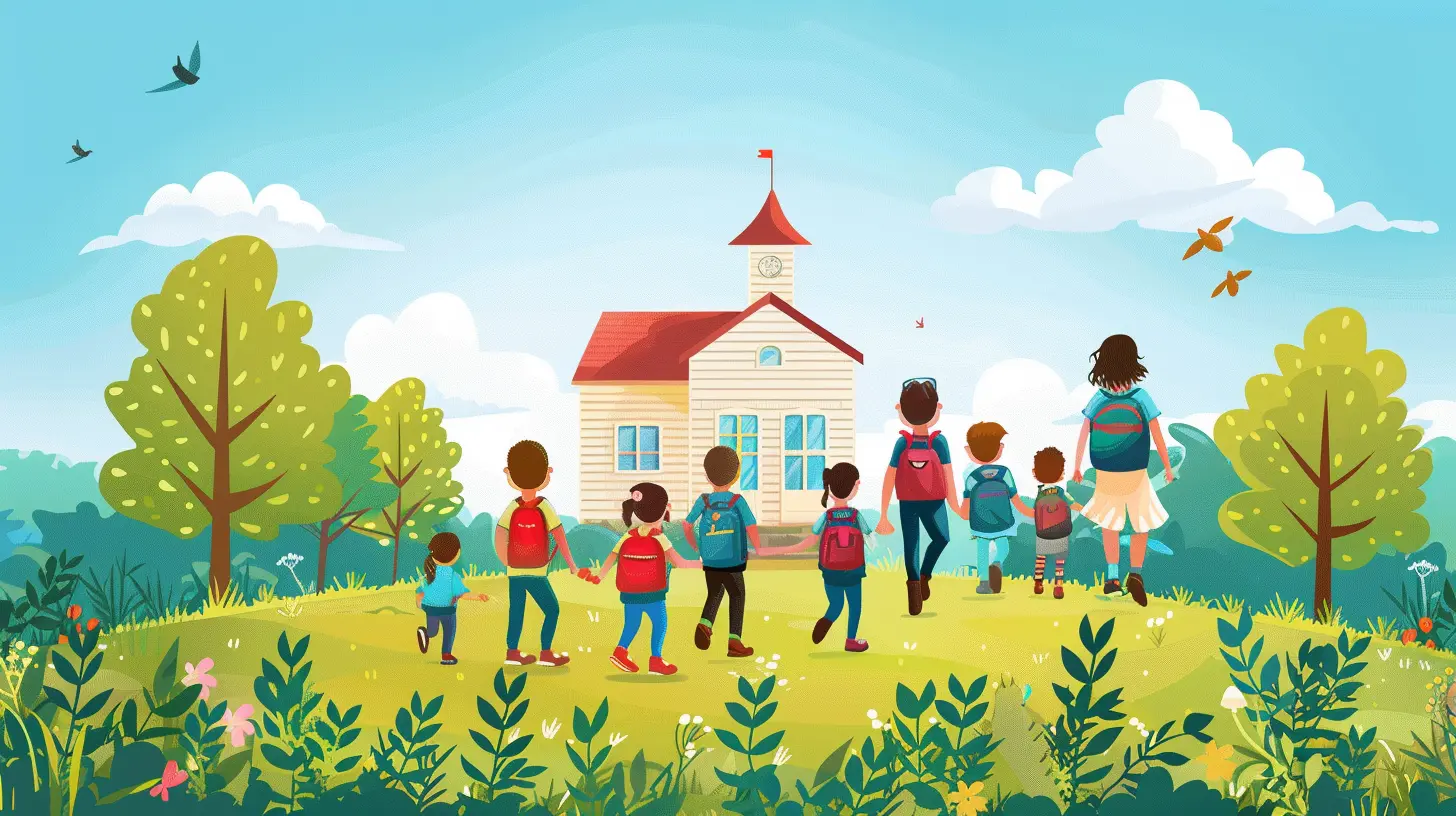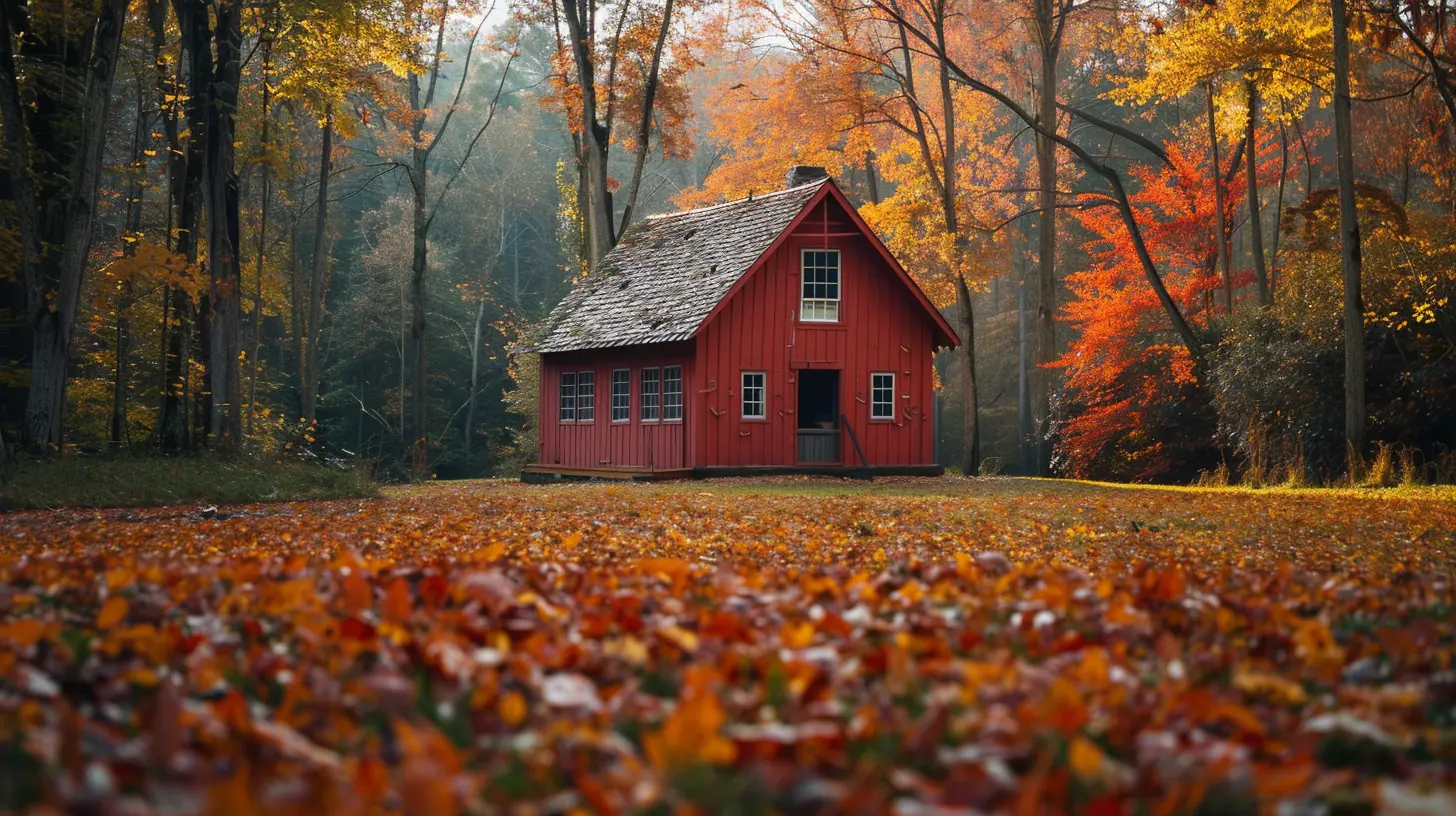How to Create a Thriving Homeschool Community
13 November 2025
So, you're homeschooling your kids—or thinking about it—and you're wondering one big thing: “How do we find our people?” You’re not alone in asking that. One of the most common concerns homeschoolers face—even more than curriculum or standardized testing—is the potential for social isolation. But here’s the good news: You can build a thriving homeschool community. One that supports you, inspires your kids, and makes the whole journey way more enjoyable.
In this guide, we’ll unpack how to create a supportive, vibrant, and long-lasting homeschool community. Whether you’re just starting or looking to grow your existing group, this will give you the strategies and momentum you need.
Why a Strong Homeschool Community Matters
Before we dive into the how, let’s talk about the why. Why should you even bother building a homeschool community?Imagine trying to walk a tightrope with no safety net. Homeschooling without a community can feel a lot like that. You’re balancing lesson plans, social development, emotional support, and more—all on your own. It’s overwhelming.
Now picture having a network of parents to bounce ideas off. Kids who become best friends. Weekly co-ops, casual field trips, and support when doubts creep in. That’s what a homeschool community gives you—a safety net, a think tank, and a second family.
The Perks of Community Life
- Support for Parents: Homeschooling can be mentally taxing. Having other parents to talk to helps.- Socialization for Kids: Kids need peers. A community gives them safe, consistent interaction.
- Resource Sharing: From used curriculum to science experiments—sharing is caring!
- Group Learning: Co-ops allow specialized instruction and unique opportunities.
- Motivation and Accountability: Sticking to your goals is easier when others are watching and cheering you on.

Step 1: Define Your Vision and Goals
Every successful community starts with a solid foundation. That means answering some crucial questions:- What kind of homeschoolers do you want to attract?
- Are you secular or faith-based?
- Do you want a formal structure or something more laid-back?
- How many families do you envision?
- What age range will your group primarily serve?
Your vision doesn’t have to be set in stone, but having a clear direction will help you attract like-minded families and avoid misunderstandings later on.
Think of it like starting a band. Do you want to play jazz, rock, or classical? You need to know your genre before recruiting your bandmates.
Step 2: Start Small and Build Slowly
Rome wasn’t built in a day, and neither is a homeschool community. Don’t stress about launching a huge group right away. Instead, start with:- A few families you know
- A simple weekly meet-up at a local park
- A book club or science day
- A group outing to a museum
As you meet more people and word spreads, your community will naturally grow. Focus on quality, not quantity—especially at the beginning.
Have you ever planted a garden? You nurture just a few seeds, and before you know it, your backyard is full of life. Building a homeschool community is a lot like that.
Step 3: Get Visible and Reach Out
To grow your community, people need to know it exists. Here are simple ways to spread the word:Use Social Media
Start a private Facebook group or an Instagram page focused on your local area. Share your group’s mission, upcoming events, and highlights from past meet-ups.Post in Local Forums
Sites like Nextdoor, Reddit, or homeschool-specific platforms (like Homeschool.com or HSLDA’s groups) are great for connecting with other families in your zip code.Partner with Libraries and Rec Centers
Ask if you can place flyers or host events. Local institutions are often happy to support educational activities.Attend Local Homeschool Events
Even if you’re not organizing them, attending other community gatherings helps you meet people and invite them to what you’re doing.Don’t be shy. Most families are searching for connection too—they’re just waiting for someone to take the first step.
Step 4: Create a Balance Between Structure and Flexibility
When your community starts to grow, consider how structured you want it to be. Some families thrive in more formal settings, while others prefer spontaneity.Think about:
- Scheduling regular events vs. impromptu meetups
- Having a leadership team vs. shared responsibilities
- Planning long-term (semester calendar) vs. month-to-month
It’s kind of like planning a road trip. Some people want a detailed itinerary. Others want to hit the highway and see where the road takes them. Neither is wrong—but you need everyone in the car to be on the same page.
Here’s a pro tip: Start with light structure and add more as needed. Being too rigid from the start can overwhelm new members.
Step 5: Plan a Variety of Activities
Let’s be honest—some kids love science experiments, others want to run wild at the playground. To keep families engaged, offer a mix of activities that cater to different interests and age levels.Ideas for Activities
- Field Trips: Museums, zoos, local farms, factories—you name it.- Co-Ops: Organized classes where parents teach or rotate lessons.
- Recess Days: Just kids being kids at the park.
- Book Clubs: Choose a book, meet to discuss (add snacks = instant success).
- Themed Learning Days: Think Egyptian history day or bug week.
- Service Projects: Volunteer together and teach kindness in action.
- Parent Nights: Don’t forget time for grown-ups to connect too.
And yes, sometimes events will flop. That’s okay. Just keep trying. The key is consistency, not perfection.
Step 6: Foster a Welcoming Culture
A thriving homeschool community doesn’t just offer great events—it feels good to be a part of. That vibe starts with you.Here’s how to nurture that warm, inclusive feeling:
- Greet new members personally. Make them feel like they belong from day one.
- Avoid cliques. Encourage mingling and mixing.
- Celebrate differences. Not every family schools the same way—and that's a good thing.
- Handle conflict kindly. Misunderstandings happen. Address them directly but gently.
- Be flexible and forgiving. Life happens—especially with kids.
Culture is the soil your community grows in. Make sure it’s rich, soft, and full of nutrients like kindness, respect, and a good sense of humor.
Step 7: Utilize Tech Tools for Organization
Managing a growing group can quickly get chaotic without the right tools. Luckily, there are plenty of apps and platforms to make life easier.Tools to Consider
- GroupMe / Slack / WhatsApp: Great for casual chats and updates.- Google Calendar: Share events, RSVP, set reminders.
- SignUpGenius: Organize potlucks, chaperones, or lesson slots.
- Facebook Groups: Still one of the easiest ways to manage communication and announcements.
- Zoom / Google Meet: Use for planning meetings or virtual classes.
Don’t worry about using them all. Just pick one or two that fit your group’s vibe.
Step 8: Encourage Leadership and Participation
Ever heard the saying “many hands make light work”? It’s especially true in homeschooling groups. The more parents step up to lead, the stronger and more sustainable your community becomes.Create opportunities for others to contribute:
- Lead a class or workshop
- Plan a field trip
- Host a gathering at their home
- Organize a fundraising event
- Start a teen group or preschool club
You’ll be amazed at the talents and passions your members bring. Some will be great at organization, others at art or science. When people feel they’re contributing, they feel more invested—and that builds loyalty and trust.
Step 9: Stay Consistent and Patient
Here’s the real talk: Some weeks, everyone shows up early with snacks, and the kids are angels. Other weeks, it rains, no one comes, and your toddler throws sand in someone’s eye.That’s normal.
Community building takes time. Really, it’s a long game. But if you stay consistent—hosting events, reaching out, and showing up—it will grow. People will start inviting others, traditions will form, and before you know it, you won’t know how you ever homeschooled without your tribe.
Plant seeds, water them regularly, and trust the process.
Final Thoughts
Creating a thriving homeschool community isn’t a one-time project—it’s an ongoing journey. It evolves as your kids grow, as members come and go, and as your needs change.But at its heart, it's about connection. Sharing the highs and lows of homeschooling. Watching your kids form friendships and find “their people.” Learning and growing—together.
So, if you’re thinking about starting a homeschool community, or struggling to keep one going—don’t give up. Your community is out there. And it’s waiting for someone just like you to light the spark.
all images in this post were generated using AI tools
Category:
HomeschoolingAuthor:

Fiona McFarlin

